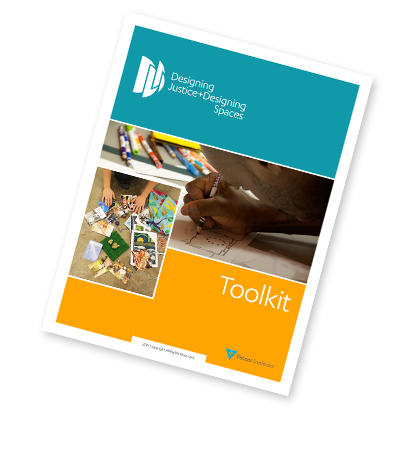The Toolkit
In the Designing Justice + Designing Spaces project, incarcerated individuals and practitioner stakeholders can engage in academic reading, discussions across relevant disciplines (e.g., restorative justice, correctional history, environmental psychology), real-world environmental analyses, individual and group reflective/experiential activities, and mini-design labs in which they explore and evaluate the intersection of design and restorative justice. These studios and workshops are all part of a toolkit that can be brought into most high security spaces for use by incarcerated individuals and justice and design stakeholders, both inside the institution and out. The DJDS Toolkit also provides processes and procedures for entering high security settings, including what to expect and what to do when you get there!

There are ten tools in our kit. These are exercises you can do to generate ideas and explore themes around restorative justice and design. Each tool contains three sections to help you get the most out of each one.
Description
In this section, you will get a brief introduction of the tool and a sample exercise.
Plan and Process
In this second section, you will get information on additional exercises you can do and how to debrief the tool in your context.
Make and Build
This final section describes the nuts and bolts of using the tool. It tells you what to buy and provides step-by-step instructions on how to teach and make great things with your materials.
Toolkit Sections
- Introduction
- Visual Diary
- Collage
- Diagram
- Perspective and Montage
- Peace and Justice Cards
- Model Making with Blocks
- Model Making with Paper
- Checklists and Assessments
- Photo Analysis
- Interviews
- The Appendix
Don’t forget the intro!
The introduction is really the eleventh tool in the kit. It is essential and should be read before using any of the sections in the toolkit. It will help you to know all the ins and outs of working inside the institution.
For example:
- How to prepare to go into a correctional facility
- How to work with criminal justice and correctional professionals
- Questions to ask regarding supplies
- Dress code
- Classroom space and equipment needs
- Creative flexibility when things don’t go as planned
- Recruiting participants
- Flyers to advertise
- Orientation session or not
- Previous art/design experience not needed!
- Number of participants for space size and number of facilitators
- And more…

